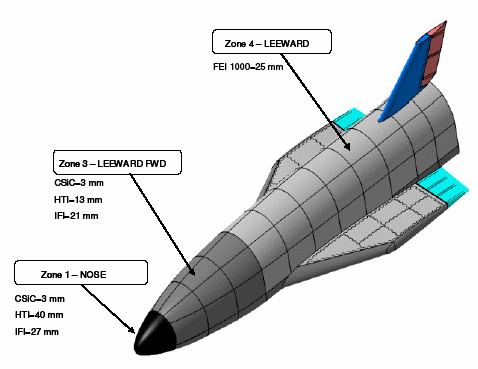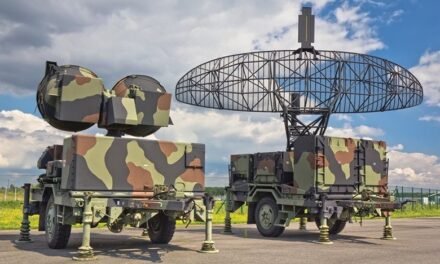Thermal Protection Systems (TPS) are critical components of spacecraft, designed to protect them from extreme temperatures experienced during space missions, particularly during launch, orbit, and reentry phases. These systems ensure the structural integrity and functionality of the spacecraft, safeguarding onboard instruments, payloads, and crew (if applicable). Here’s an in-depth look at the significance of TPS in spacecraft:
1. Protection During Atmospheric Reentry
- Extreme Heat Generation:
- When a spacecraft reenters a planet’s atmosphere, it experiences intense friction due to the compression of atmospheric gases, creating temperatures that can exceed 1,500–3,000°C (2,732–5,432°F).
- Without TPS, the spacecraft’s structure would burn up or melt due to these extreme conditions.
- Ablative Materials:
- TPS materials like phenolic resin and carbon composites absorb and dissipate heat by ablating (shedding material layers), preventing heat transfer to the spacecraft’s interior.
- Example: NASA’s Apollo Command Module used an ablative heat shield to survive reentry.
2. Thermal Regulation in Space
- Vacuum Environment:
- In the vacuum of space, there is no atmosphere to conduct or convect heat, meaning spacecraft rely solely on radiation to gain or lose heat.
- Without proper thermal management, one side of the spacecraft exposed to the Sun could reach +120°C (248°F), while the shadowed side could drop to -150°C (-238°F).
- Thermal Insulation:
- Multilayer Insulation (MLI) blankets, often made from materials like Kapton or Mylar, help maintain a stable temperature by reflecting solar radiation and minimizing heat loss.
3. Protecting Sensitive Equipment
- Avionics and Instruments:
- Spacecraft carry sensitive electronics, cameras, and scientific instruments that require operation within specific temperature ranges.
- TPS ensures these systems remain functional by shielding them from extreme heat or cold.
- Example: The Hubble Space Telescope uses a TPS to maintain a stable operating environment for its instruments.
4. Safeguarding Crew and Payload
- Human Spaceflight:
- In crewed missions, TPS is essential to protect astronauts from the lethal temperatures experienced during reentry and to maintain livable conditions in the spacecraft.
- Example: The SpaceX Crew Dragon capsule uses a heat shield made of PICA-X (Phenolic Impregnated Carbon Ablator) to protect astronauts during reentry.
- Payload Integrity:
- Scientific instruments, satellites, and cargo benefit from TPS to ensure their safe delivery to orbit or back to Earth.
5. Enabling Deep Space Missions
- Extreme Temperature Variations:
- Deep-space missions encounter temperatures ranging from extreme cold near distant planets to intense heat near the Sun.
- TPS allows spacecraft to operate in these harsh environments.
- Example: The Parker Solar Probe uses a carbon-composite heat shield to survive temperatures up to 1,377°C (2,511°F) during its close approach to the Sun.
6. Types of Thermal Protection Systems
Ablative TPS
- Function:
- Absorbs and dissipates heat by gradually vaporizing or charring material layers.
- Applications:
- Reentry vehicles like capsules and landers.
- Examples:
- NASA’s Orion spacecraft uses an ablative heat shield made of AVCOAT material.
Radiative TPS
- Function:
- Reflects and emits heat away from the spacecraft.
- Applications:
- Used in spacecraft that experience prolonged exposure to high heat, such as solar probes.
- Examples:
- Radiative coatings on the Voyager spacecraft.
Reusable TPS
- Function:
- Designed to withstand multiple reentries without significant degradation.
- Applications:
- Spaceplanes and reusable vehicles.
- Examples:
- The Space Shuttle used silica tiles and reinforced carbon-carbon (RCC) for its TPS.
7. Efficiency and Weight Considerations
- Lightweight Materials:
- TPS materials must balance thermal performance with minimal weight to reduce launch costs and improve payload capacity.
- Example: Silica-based tiles on the Space Shuttle were lightweight yet highly effective at insulating against heat.
- Energy Efficiency:
- Minimizing heat transfer reduces the spacecraft’s power requirements for cooling systems.
8. Durability and Longevity
- Resistance to Environmental Stresses:
- TPS must withstand not only thermal extremes but also radiation, micrometeoroid impacts, and chemical degradation in space.
- Example: The Huygens probe, which landed on Titan, used a durable TPS to survive atmospheric entry and landing.
9. Supporting Interplanetary and Return Missions
- Landing on Other Planets:
- TPS is essential for atmospheric entry vehicles on planets like Mars, where thin atmospheres still generate significant heat during entry.
- Example: NASA’s Mars rovers rely on heat shields for safe atmospheric descent.
- Sample Return Missions:
- TPS ensures the safe return of materials from other celestial bodies.
- Example: The OSIRIS-REx mission used TPS to bring asteroid samples back to Earth.
10. Thermal Design Integration
- Close Collaboration:
- TPS is integrated with other spacecraft systems, such as propulsion and structural components, to ensure seamless operation.
- Testing and Validation:
- TPS undergoes rigorous ground testing, including vacuum chambers, arc jet tests, and reentry simulations, to validate performance.
- Example: The heat shield for the Perseverance rover was tested under simulated Martian atmospheric conditions.
Challenges in TPS Development
- Material Innovation:
- Developing materials that balance heat resistance, durability, and weight.
- Cost and Complexity:
- TPS systems can be expensive to design, test, and manufacture.
- Reliability:
- TPS failure can result in mission loss, requiring extensive testing and redundancy.
Conclusion
Thermal Protection Systems are indispensable for spacecraft, ensuring their survival and functionality in extreme thermal environments. Whether shielding against the intense heat of reentry, maintaining stable temperatures in space, or enabling deep-space exploration, TPS plays a pivotal role in the success of space missions. As missions become more ambitious, innovations in TPS materials and designs will continue to drive the advancement of space exploration technology.
Hashtags
#ThermalProtection #SpacecraftThermalSystems #ThermalManagement #HeatShieldTechnology #AerospaceTPS #ReentryProtection #AtmosphericReentry #HeatResistance #SpacecraftHeatShield #AblativeTechnology #ThermalBarrierMaterials #HighTempMaterials #AerospaceComposites #HeatResistantCoatings #MaterialInnovation #SustainableTPS













